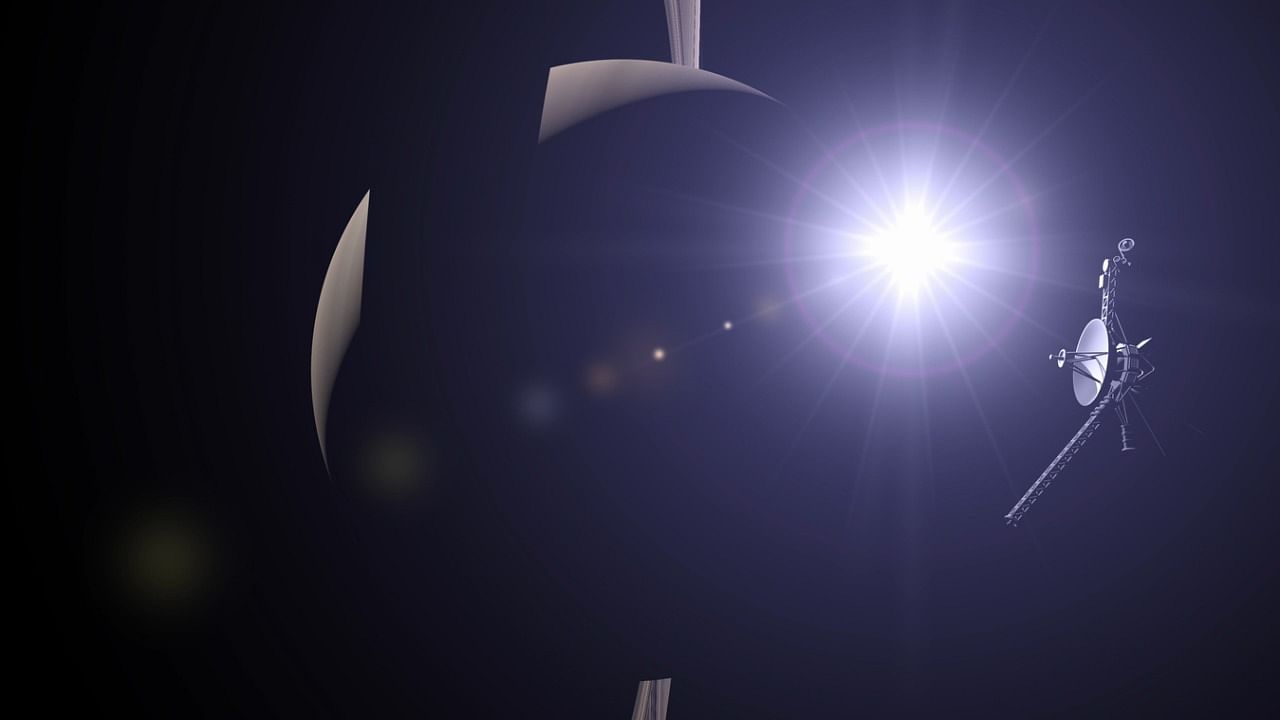
Voyager 2, the aging explorer of our solar system, appears to be alive and well, NASA officials said Tuesday. But they may not be able to communicate with the spacecraft for at least the next two months.
On Friday, scientists at NASA’s Jet Propulsion Laboratory announced that they had lost contact with Voyager 2, which is over 12 billion miles from Earth. Engineers on the ground sent an incorrect command to the spacecraft July 21 that knocked its antenna 2 degrees away from the Earth. That made it impossible for the mission team to send or receive signals.
But on Tuesday morning, officials from the Deep Space Network, a global system used to operate numerous active space missions, detected a carrier signal from Voyager 2. That means the spacecraft is still broadcasting, although the signal is too weak for transmitting data.
Background: A long, strange trip through the solar system
Voyager 2 launched to space August 20, 1977, to take a tour of our solar system’s outer planets. It’s the only spacecraft to have visited Uranus and Neptune, and the second mission to cross the boundary that separates our solar system from the rest of the Milky Way, an area commonly referred to as interstellar space.
This isn’t the first time NASA has lost the ability to talk to the spacecraft. In 2020, scientists managing the Deep Space Network shut down the sole radio dish capable of talking to Voyager 2 for repairs and upgrades. When it came back online in March 2021, the Voyager 2 was still functioning.
A few weeks after Voyager 2 began its journey, NASA launched its twin, Voyager 1, which followed a different trajectory and reached interstellar space first. Mission specialists are still in contact with that spacecraft.
Why it matters: A mission that just keeps going
While the spacecraft is nearly 46 years into its journey, it continues to produce useful scientific data about how the environment changes outside our solar system, and how the heliosphere — a bubble of radiation from our sun — interacts with interstellar space.
But if something goes wrong before scientists recover communications with the spacecraft, they have no way of fixing it. That’s a bigger concern than what scientific data might be lost in the near term, a spokesperson for the Jet Propulsion Laboratory said.
Earlier this year, Voyager 2 switched to running its five instruments on backup power to prolong the life of the mission. Scientists anticipate that one of these instruments will need to be shut down completely in 2026, and others in successive years, to keep the mission functioning for as long as possible.
What’s next: The people of Earth can wait
The mission’s managers will attempt to use the Deep Space Network on Wednesday to send Voyager 2 a command to reorient the direction of its antenna back toward Earth, according to the laboratory spokesperson. It will take about 18 hours for the signal to arrive at the spacecraft, and another 18 before scientists on Earth will know if it worked.
If the command fails, scientists will have to wait until Oct. 15. On that day, the mission’s computer is programmed to automatically point the antenna back toward Earth, which they hope will restore communications.
“It’s a 46-year-old spacecraft — we don’t like being out of contact with it,” the spokesperson said. “On the other hand, it’s 46. It’s done well so far. So we have a lot of confidence that it’ll be OK.”